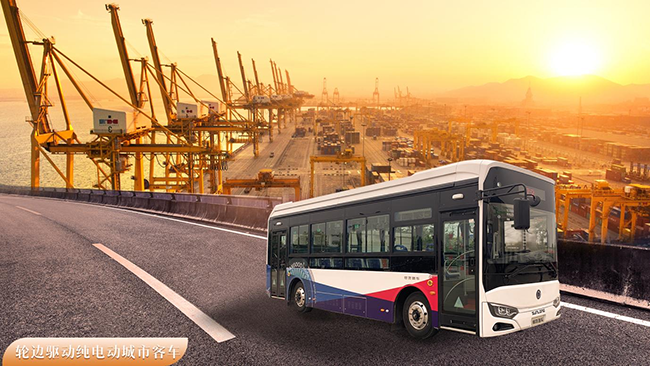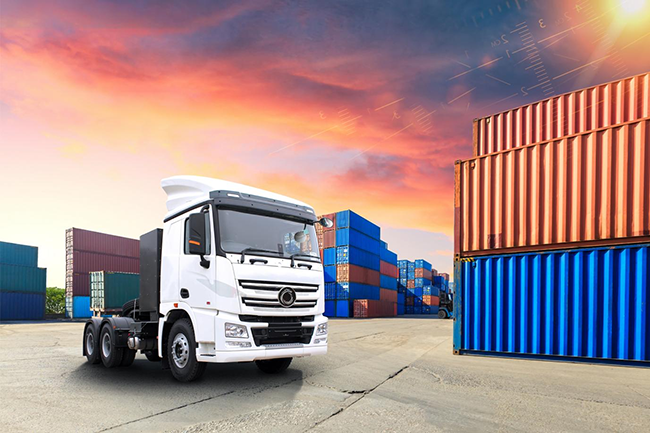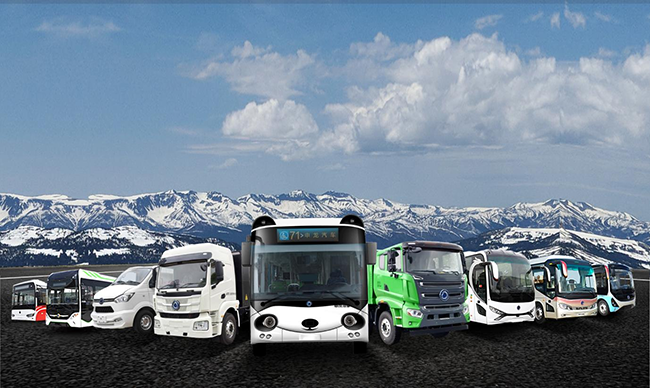As the "main artery" of the national economy, commercial vehicles are connected to production and construction on one end, and to people's well-being on the other. Their development trajectory has always resonated with national strategies. Since 2025, under the dual guidance of policies and market changes, China's commercial vehicle industry has been accelerating its departure from traditional development models and moving towards high-quality development direction of electrification, intelligence, and globalization. This not only provides solid support for the implementation of the "dual carbon" goal, but also opens up a new track in international market competition.
The combination of policies has laid a solid institutional foundation for the development of the commercial vehicle industry. From the top-level design of national policies to the precise implementation of local policies, the multi-level policy system not only sets the "red line" for industry development, but also builds an innovative "stage". The Rural Road Regulations will be officially implemented in September. This policy may seem to focus on road construction, but it actually opens up the "last mile" for commercial vehicles to penetrate the rural market. The improvement of rural transportation conditions will directly activate the demand for rural logistics, agricultural production transportation, etc., bringing incremental space to the segmented market of commercial vehicles such as light trucks and micro trucks. At the same time, it also creates the basic conditions for new energy commercial vehicles to enter the rural scene - after all, only with the "road" first can more environmentally friendly and economical new energy commercial vehicles truly serve rural revitalization.

The policy of scrapping and updating old operating trucks is a key lever to promote the industry's "cage replacement". The subsidy policy to be implemented throughout 2025 will provide differentiated subsidies for old National III and IV trucks, distinguishing between situations such as "early scrapping", "scrapping and updating National VI vehicles", and "purchasing new energy vehicles". This not only targets high polluting and high energy consuming old vehicles, but also accelerates the promotion of new energy commercial vehicles. This policy orientation of "phasing out the old and encouraging the new" can not only quickly reduce carbon emissions in the commercial vehicle sector, but also force logistics companies to accelerate vehicle updates and iterations, injecting fresh blood into the industry. The upgrade of mandatory standards for vehicle safety devices has placed "safety" at the forefront of industry development. Starting from July, new production and operation trucks must be equipped with intelligent devices such as ESC and AEBS, and dangerous goods transport trucks must be equipped with "dual devices". This requirement may seem to increase the production costs of car companies, but in reality, it is installing "intelligent safety shields" on commercial vehicles to reduce traffic accidents from the source. In the long run, it not only reduces the operational risks of logistics companies, but also improves the safety level of the entire industry.
The "heartwarming measures" of local policies have further optimized the operating environment of commercial vehicles. Since September, Jiangsu Province has waived the fees for towing and crane services for highway vehicle rescue services. Although this policy is small, it has accurately hit the "pain point" of logistics enterprises. For commercial vehicles that run on highways all year round, the rescue cost of sudden malfunctions is a considerable expense. Jiangsu's "free order" policy not only directly reduces the operating costs of enterprises, but also reflects the local government's support for the logistics industry, providing a model for other provinces to learn from. This collaborative model of "national policy setting direction and local policy solving problems" has enabled the commercial vehicle industry to not only develop in a standardized manner, but also feel the warmth of policies.
If policy is the "navigator" of industry development, then innovation and change on the market side are the "engines" driving the industry forward. Since 2025, the commercial vehicle market has shown distinct characteristics of "overall stability and leading in new energy", and technological innovation and global layout have become the key to breaking through the industry.

From the perspective of technological innovation, the deep integration of electrification and intelligence is reshaping the industrial form of commercial vehicles. The launch of the GB1589 standard revision work focuses on areas such as vehicle intelligence, networking, electrification, and lightweighting. Measures such as moderately relaxing the length limit of refrigerated trucks and researching and adjusting the height limit of vehicles can not only meet the needs of battery layout for new energy commercial vehicles, but also improve the transportation efficiency of vehicles, providing greater space for industry technological innovation. The operation of the world's first 100MW heavy-duty truck supercharging station in Sichuan has solved the "energy replenishment anxiety" for the large-scale promotion of electric heavy-duty trucks.
From the perspective of market performance, new energy commercial vehicles have become the "core engine" of industry growth. In the first seven months of 2025, the sales of commercial vehicles in China only increased by 3.9% year-on-year, but the sales of new energy commercial vehicles increased by nearly 70% year-on-year. This "ice and fire" situation clearly indicates that new energy commercial vehicles have shifted from "policy driven" to "policy+market driven" dual drive.
More noteworthy is that the global layout of China's commercial vehicle industry has entered a new stage of "full chain ecological output". In the past, China's commercial vehicle exports were mainly based on "whole vehicle trade", with low added value and weak discourse power; Nowadays, with the continuous accumulation of advantages in the industrial chain, the "going global" of Chinese commercial vehicles has covered the entire chain of vehicles, chassis, power batteries, charging and swapping stations, financial leasing, and after-sales services. Weichai Power's Shaanxi Heavy Duty Truck Group doubled its sales in markets such as Guinea, Saudi Arabia, and Algeria in the first half of the year. From January to July, China exported a total of 54000 new energy commercial vehicles, a year-on-year increase of 200%. Behind these data is the upgrade of Chinese commercial vehicles from "product exports" to "ecological going global". This upgrade can not only enhance the competitiveness of Chinese commercial vehicles in the international market, but also drive upstream and downstream industry chain enterprises to jointly "go global" and form a global industrial cluster advantage.
Of course, the commercial vehicle industry also faces some challenges in the process of moving towards high-quality development. For example, although the cost of new energy commercial vehicles is continuously decreasing, there is still a gap compared to traditional fuel vehicles; Although the construction of supercharging infrastructure is accelerating, there is still a problem of insufficient coverage in some remote areas; Although overseas markets are growing rapidly, they also face risks such as local policies, regulations, and cultural differences. However, these challenges are precisely the driving force for further innovation in the industry - with the continuous iteration of technology, the cost of new energy commercial vehicles will be further reduced; With the advancement of infrastructure construction, the energy replenishment network will become more perfect; With the accumulation of overseas experience of enterprises, their ability to cope with risks will continue to improve.

Driven by the "dual carbon" goal and the wave of globalization, China's commercial vehicle industry is sailing on the track of new energy and globalization with policies as the sail and innovation as the propeller. In the future, with the continuous deepening of industrial chain collaboration and the continuous improvement of technological level, Chinese commercial vehicles will not only become the "main force" for domestic logistics cost reduction, efficiency improvement, and green development, but also set a new benchmark for "Chinese intelligent manufacturing" in the international market, contributing Chinese solutions to the green transformation of the global commercial vehicle industry.







